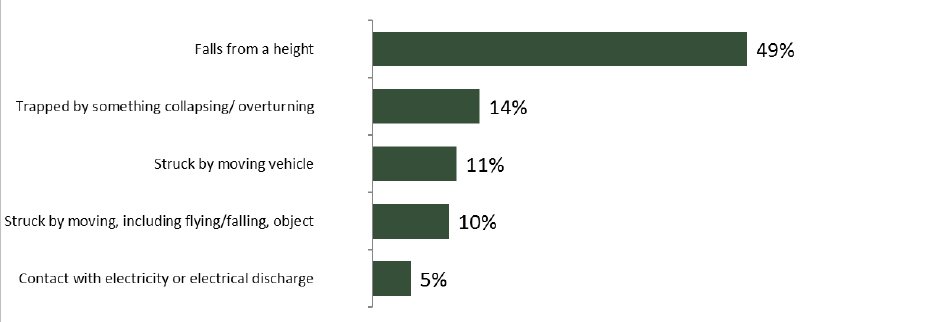Half of construction companies say awkward customers are a workplace risk – HSE annual report
Half of all construction companies surveyed have identified difficult customers as a psychological workplace risk they face.
Other psychological risks identified include time pressure, long and irregular hours, poor communication through the chain, job insecurity, lack of influence on the way work is carried out and (in 7% of firms) discrimination.
As only 13% of employees in construction are women (compared with 47% across the whole workforce in the UK) and with foreign workers leaving Brexit Britain, possibly more firms should identify discrimination as a risk in the UK’s high employment economy (a bit more about that here).
The risks identified by most companies are more what you would expect from construction – the physical risks from machines and tools, working at height, moving vehicles, falling objects, inclement weather and the like.
These are some of the results identified in the Health & Safety Executive’s report this year on safety in the workplace.
The headline findings confirm the provisional figures released in July of 147 workplace fatalities across Great Britain, 30 of them in construction (which is below the five-year average of 34 for construction).
There are 1.4million work age people in Great Britain suffering from work-related illness and 581,000 workers who sustained a non-fatal injury at work in 2018-19.
There were 28.2million working days lost as a result of illness and injury, which is estimated to have cost the country around £15billion in lost production - or £532 per day.
Construction is a major sector of the economy employing 7% of the workforce and therefore makes a significant contribution to the figures, especially as it is one of the riskier sectors to work in – the death rate is about 3.5 times greater than the all industry average, for example, and the injury rate is 1.5 times greater – more than that compared with most industries but agriculture and waste recycling are riskier than construction and raise the average.
Muskuloskeletal problems (bad backs and the like) account for most (62%) of the 79,000 incidences of ill health (new or long-term) in construction, with stress, depression and anxiety next, accounting for 21%. Muskuloskeletal problem rates are way above the all-industry average (175%) while stress rates in construction are half the all-industry average.
Work-related cancer is still a significant cause of ill health in construction, causing some 3,500 premature deaths each year.
The most common cause is asbestos, although other dusts, including silica from stone and concrete, are also significant contributors. Construction accounts for 43% of all work-related cancers, making the disease six times more prevalent in construction than in the workplace in general.
Injuries in the construction industry continue to show a long-term downward trend but there were still 54,000 non-fatal injuries in 2018-19 that resulted in lost working days. Slips, trips or falls on the same level accounted for the highest proportion of them (25%), which is below the all-industry average. On the other hand, falls from height were more than twice the all industry average accounting for 18% of injuries. Being hit by a moving or falling object was also above average at 12%.
As a result of the deaths and injuries 158 construction companies were prosecuted in actions led by the HSE in 2018-19, with 146 (92%) resulting in a conviction. Fines imposed totalled £15.7million – an average of £107,000 per conviction.
In 2017/18 there had been 202 prosecutions resulting in 190 convictions (94%) that led to £18million in fines – an average of around £95,000 per conviction.

